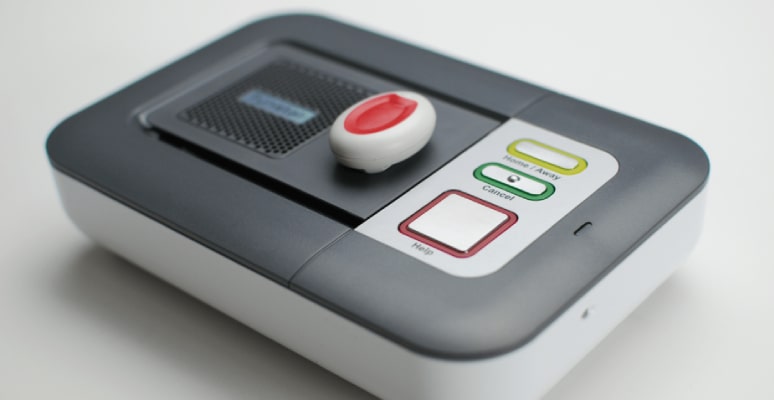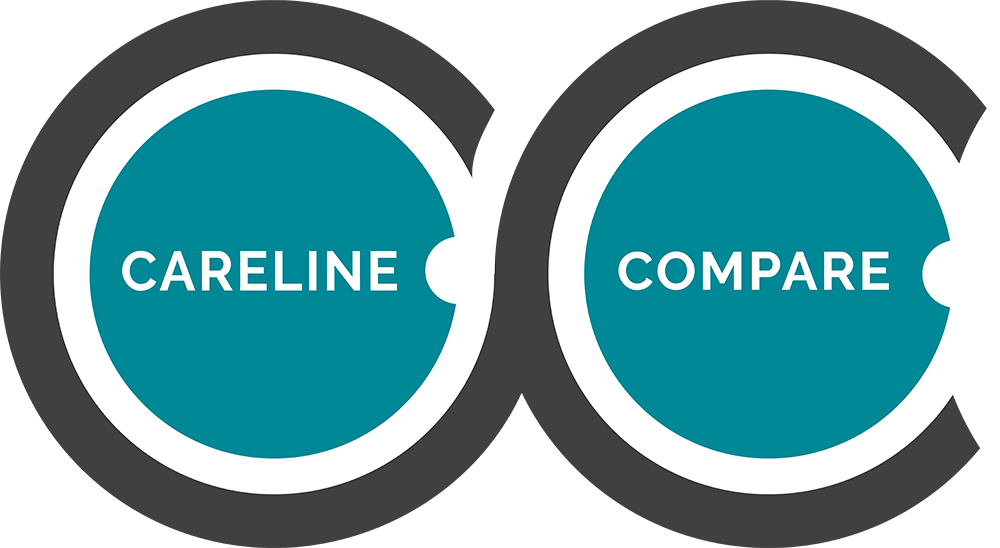
Personal Alarms for the Elderly – Everything you need to know!
on thePersonal alarms for the elderly support thousands of people throughout the United Kingdom. In fact, it’s currently estimated that there around 1.7 million personal alarm users in the UK.
The system uses monitoring and communication technology and continues to grow and improve. But, why are personal alarms so successful? Why are more and more people purchasing them for their home, or for a loved one?
Today, Careline Compare provided you with a comprehensive guide to personal alarms for the elderly. Discover why there is a need for them, about the equipment used, and the benefits of having one at home.
An Ageing Population
The United Kingdom has an ageing population, and it’s continuing to rise. The improvements in healthcare and medicine mean that people are now living longer.
According to figures released in December 2017, there are around 11.8 million people over the age of 65 in the UK. This figure is expected to rise by another 40% in the next 17 years. There are then further 1.6 million people over the age of 85.
Although healthcare is continuing to improve, the natural ageing process can still cause problems. Falls among the elderly becomes a real problem, as do unexpected and sudden health problems, such as arthritis and dementia.
It’s this issue and the fact that many elderly people live alone that’s the main cause for concern. If somebody falls at home and is unable to reach their telephone, it could be hours, or even days) before somebody visits to help them. This could potentially put their lives at risk.
32% of people live alone in the UK, that’s 32% of the population. Furthermore, 51% of people aged 75 and over live alone. These loneliness figures, and sudden health turns, also puts pressure on the NHS. Bed-blocking is a severe problem, where patients are unable to leave hospital after receiving treatment as they live alone and cannot afford or find suitable care.
This is where personal alarms for the elderly can help you, your family and the NHS.
Personal Alarms for the Elderly – The Idea
The idea behind the personal alarms for the elderly is to provide 24/7 care and support in your home, but with minimal intrusion and no difficulty. The aim of the personal alarm industry is to help the elderly, and disabled, to continue living in their own home.
They hope that by have an alarm at home, you and your loved ones will not worry as much about the consequences of a fall or sudden medical concern. Instead, you’ll feel confident and safe in your home.
The theory behind the personal alarm is that you can find help quickly and easily – no matter what the situation is. If you fall, you simply push a button and a specialist team respond, assess and call for help on your behalf.
With more and more people having personal alarms, it’s also hoped that the pressure on the NHS will be reduced and that less people will be forced into moving into care homes – or into paying for home care.
The Alarm Equipment
The most common form of the personal alarm comes in two separate parts, both of which are designed to be as simple to understand as possible. Alongside the term personal alarm, some companies may also use the following phrases:
- Telecare Alarm.
- Careline Alarm.
- Personal Alarm Pendant.
- Help Button.
The first part of the personal alarm is the base unit. This box, which is often a similar size to an internet router, is plugged into the telephone line and your mains power. Your telephone would then be plugged into the back of the base unit, using an adaptor included inside the box by the manufacturer.
The base unit will have a help button for you to press in an emergency, as well as a cancel button for false alarms. Some models may also include a button which you can press to inform your supplier that you’re going away for a while – on holiday for example.
Alongside the base unit, personal alarm users will also receive a small pendant button. One of the best examples, and most common, is the MyAmie Pendant by Tunstall. This example includes all the latest in Telecare technology.
This button is worn either around the wrist or neck, whilst some models can be clipped onto your belt or shirt. The pendant is essentially a little help button which should be pressed in an emergency.
Wearing a pendant means that you can call for help no matter where you are in your home, or garden. The MyAmie Pendant, used by most providers, is waterproof. This means that the wearer can keep their pendant on in the bathroom – where the risk of a fall may increase.
The pendant button is a great device as it gives the power to you. You’re able to choose how you wear it, so that you’re always as comfortable as possible. It’s easy to hide too – simply tuck it under your sleeve your down your top.
In an Emergency
So, how exactly do personal alarms for the elderly work? Let Careline Compare provide an example situation to help explain.
Last year my elderly mother, who lives by herself, suffered from a fall in her kitchen. Fortunately, she has a personal alarm in her home – following some persuasion from myself and our family.
After she fell, my mother pressed the button on her pendant. She wears it around her wrist, so she was able to reach and press it quite easily.
Once she pressed her pendant, an alert call was made to her personal alarm provider’s monitoring team. They responded almost instantly and talked to her over her alarm’s base unit. She informed me afterwards that they had asked her exactly what had happened and what her injuries were, as well as trying their best to reassure her.
I then received a phone call from the monitoring team. A friendly lady phoned me and informed me that my mother had suffered a fall and needed my assistance. As her injuries were severe, the lady told me that she had also phoned the emergency services and that an ambulance was on its way.
The paramedics and I arrived on the scene and my mother was taken to hospital. She had broken her arm and was badly bruised, but she had received the help she needed quickly, and was now on the road to recovery.
Without the personal alarm I wouldn’t have known that anything had happened. If she wasn’t able to reach her phone, it’s possible that she’d have been on the floor until me or a sibling went to visit.
Fall Detector
Some personal alarm providers will give the option of a fall detector upgrade. This device works in the same way as the standard pendant does but has one major difference which adds even more protection.
The fall detector automatically detects when you’ve suffered from a fall and will send an alert call through to your provider’s monitoring centre. There is no need for you to press anything.
The two most popular examples of the Fall Detector are the iVi Detector and the Vibby Pendant – both manufactured by Tunstall. The iVi is worn around the neck, whilst the new Vibby can be worn around the wrist or neck.
Both examples include a regular help button, which can be pressed if you need help for any other reason.
Some providers also offer smoke detectors, which can also be linked through to their monitoring centre. Should the detectors be set-off, an alert message is raised just like it would if somebody pushed their pendant
Personal Alarm Add-Ons
Alongside personal alarms for the elderly, some Telecare providers also offer other useful equipment such as Key Safes and smoke detectors.
Key Safes are fantastic as they not only work well with the personal alarm, but they also add extra security to your home. They’re attached to the exterior wall of your home and are used to lock spare keys away behind a secure metal door.
You then set your own combination code, which can be shared with your family. You should also provide your personal alarm provider with this code as it could come in handy in an emergency.
Let’s say, for example, that when my mother fell last year the paramedics had got to her home before me, but her door was locked. If she didn’t have a key safe, or even if she did but she hadn’t shared the code, the paramedics would have had to wait for me to arrive. Either that, or they may have had to use force if her injuries were life-threatening.
With a Key Safe and the code, the paramedics would be able to gain entry and begin treatment. The time saved here could be life-saving.
Careline Compare
I’m forever grateful that personal alarms for the elderly exist, and that the service works so well. That’s why I created Careline Compare – to help others to find the most reliable and most affordable provider of this Telecare equipment.
If you’re finding it difficult to choose which Careline provider to go with, then Careline Compare is here to help. My website collects the prices and packages from all the leading providers of Telecare equipment and compares them in one easy-to-use website.
I only show providers which are fit for purpose, with the majority being accredited by the industry body; the Telecare Services Association.
Find Peace of Mind
Peace of mind is a term I often see when reading reviews of the various personal alarm providers, and this is definitely true. Our family feels so much better now that we know my mother will always be able to find help.
Compare prices today and find peace of mind for you and your loved ones!

